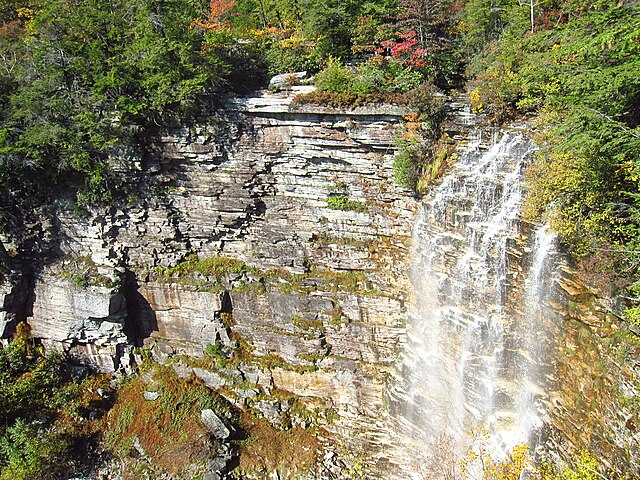By Katina Boutis
The Shawangunk Mountains were recently ranked the highest in biological diversity by the New York Natural Heritage Program and as one of the “last great places on Earth” by The Nature Conservancy. Based on the many natural species and communities the range contains, it is easy to see why the Shawangunks have received these great honors. All together, the Shawangunks “support 42 state rare species, eight state rare ecological communities, and three globally rare ecological communities”.
 The Shawangunk Mountains, part of the Appalachian Mountain Range, lie nestled between the Hudson River Valley and the Catskill Mountains, approximately a two hour drive from Manhattan.
The Shawangunk Mountains, part of the Appalachian Mountain Range, lie nestled between the Hudson River Valley and the Catskill Mountains, approximately a two hour drive from Manhattan.
Largely comprised of weather-resistant conglomerate rock face, the Shawangunks have been morphed and deformed by tectonic movement and glacial episodes over hundreds of millions of years. The cliffs, caves, lakes, and wetlands formed by these geological alterations are conducive for supporting diverse species of both plants and animals. The present day biodiversity is possible through a complexity of interactions between the geology, environment, and natural disturbances of invasive species and diseases, storms, and, perhaps most importantly, forest fires.
Forest fires play a key role in the recycling of nutrients and the general maintenance of biological diversity in the mountain range. Over 9,000 years of natural forest fires in the Shawangunks have made a favorable environment for rare ridgetop dwarf pine barrens and the second largest chestnut oak population in New York State. Forest fires began to be actively suppressed during the 1940’s with the Smokey Bear campaign spouting the slogan “Only You Can Prevent Wildfires!”. Although the idea was to protect from excessive environmental damage caused by human carelessness and to provide a general awareness of the dangers of forest fires to the public, it was eventually recognized that forest fires are a healthy and beneficial process for biodiversity. Forests are actually fire-dependent.
By actively suppressing forest fires, leaves, twigs, shrubbery, and other matter accumulate on the forest floor and serve as fuel. Without an occasional fire disturbance, the overload of highly flammable floor content can perpetuate a severe fire, reaching such high temperatures that virtually everything will be destroyed. The damaged forest will take vastly more time to regrow, and intricate ecosystems have the potential for being entirely obliterated altogether. One way that officials are working to conserve forests and biodiversity in the Shawangunks is to actively manage forest fires. The efforts are carefully planned and controlled to reintroduce fire in such a way as to reduce the likelihood of a severely destructive forest fire. Prescribed burning is done through the Shawangunk Ridge Biodiversity Partnership.
This Spring, CERC is offering a course in Forest Management and Conservation introducing several key issues in forest ecology and management through a local lens. Students will participate in a day long trip to Black Rock Forest and study how pathogens and other invasive species affect forest structure and function. Forest conservation will also be considered on a global scale.
The course is being offered as part of CERC’s Certificate Program in Environmental Sustainability, and can be taken on an individual basis or as part of the 12 course Certificate Program. Please visit the CERC website for more information or contact CERC for more information at cerc@columbia.edu or (212) 854-0149.
Source: John Thompson, Winter 2011/2012: ESRI, ArcNews. http://goo.gl/3solB
Katina Boutis is an intern at the Center for Environmental Research and Conservation.



